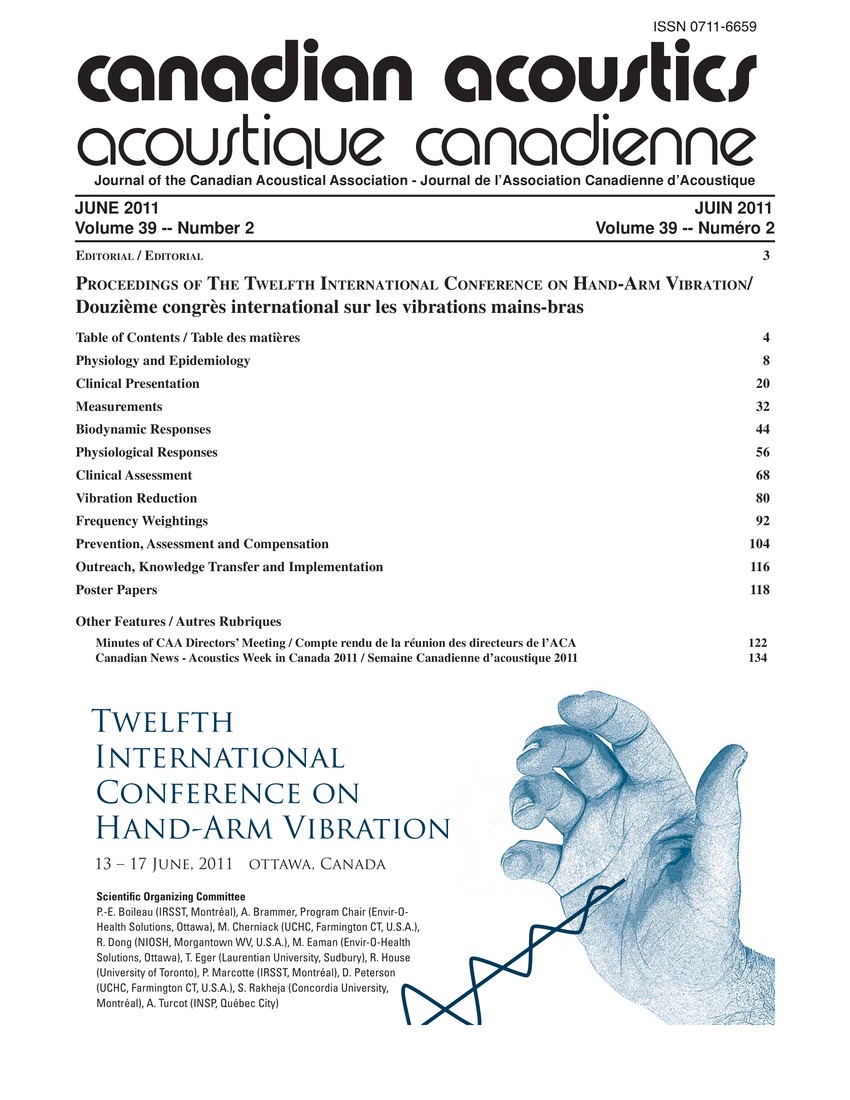Reductions in finger blood flow induced by low magnitude hand-transmitted vibration
Mots-clés :
Accelerometers, Blood, Blood flow, Hand-transmitted vibration, Leisure activities, University students, Vibrating toolsRésumé
The effect on finger blood flow of lower magnitude vibration in healthy female subjects was investigated. Twenty healthy female university students aged 18 to 30 years with no history of regular use of hand-held vibrating tools in occupational or leisure activities participated in the study. Finger blood flow (FBF) was measured in the middle fingers of both hands using plethysmography. The vibration was measured using an accelerometer in the VPM, and was monitored using a digital meter and oscilloscope. The medians and inter-quartile ranges of the FBF in the middle fingers of the exposed and unexposed hands during each of the seven 4-minute periods show that FBF did not differ between the exposed right hand and the unexposed left hand. There was no significant change in FBF between period (i) and period (ii) on either hand, indicating the 2-N force applied by the right hand did not change finger blood flow on either hand.Fichiers supplémentaires
Publié-e
Comment citer
Numéro
Rubrique
Licence
Author Licensing Addendum
This Licensing Addendum ("Addendum") is entered into between the undersigned Author(s) and Canadian Acoustics journal published by the Canadian Acoustical Association (hereinafter referred to as the "Publisher"). The Author(s) and the Publisher agree as follows:
-
Retained Rights: The Author(s) retain(s) the following rights:
- The right to reproduce, distribute, and publicly display the Work on the Author's personal website or the website of the Author's institution.
- The right to use the Work in the Author's teaching activities and presentations.
- The right to include the Work in a compilation for the Author's personal use, not for sale.
-
Grant of License: The Author(s) grant(s) to the Publisher a worldwide exclusive license to publish, reproduce, distribute, and display the Work in Canadian Acoustics and any other formats and media deemed appropriate by the Publisher.
-
Attribution: The Publisher agrees to include proper attribution to the Author(s) in all publications and reproductions of the Work.
-
No Conflict: This Addendum is intended to be in harmony with, and not in conflict with, the terms and conditions of the original agreement entered into between the Author(s) and the Publisher.
-
Copyright Clause: Copyright on articles is held by the Author(s). The corresponding Author has the right to grant on behalf of all Authors and does grant on behalf of all Authors, a worldwide exclusive license to the Publisher and its licensees in perpetuity, in all forms, formats, and media (whether known now or created in the future), including but not limited to the rights to publish, reproduce, distribute, display, store, translate, create adaptations, reprints, include within collections, and create summaries, extracts, and/or abstracts of the Contribution.


